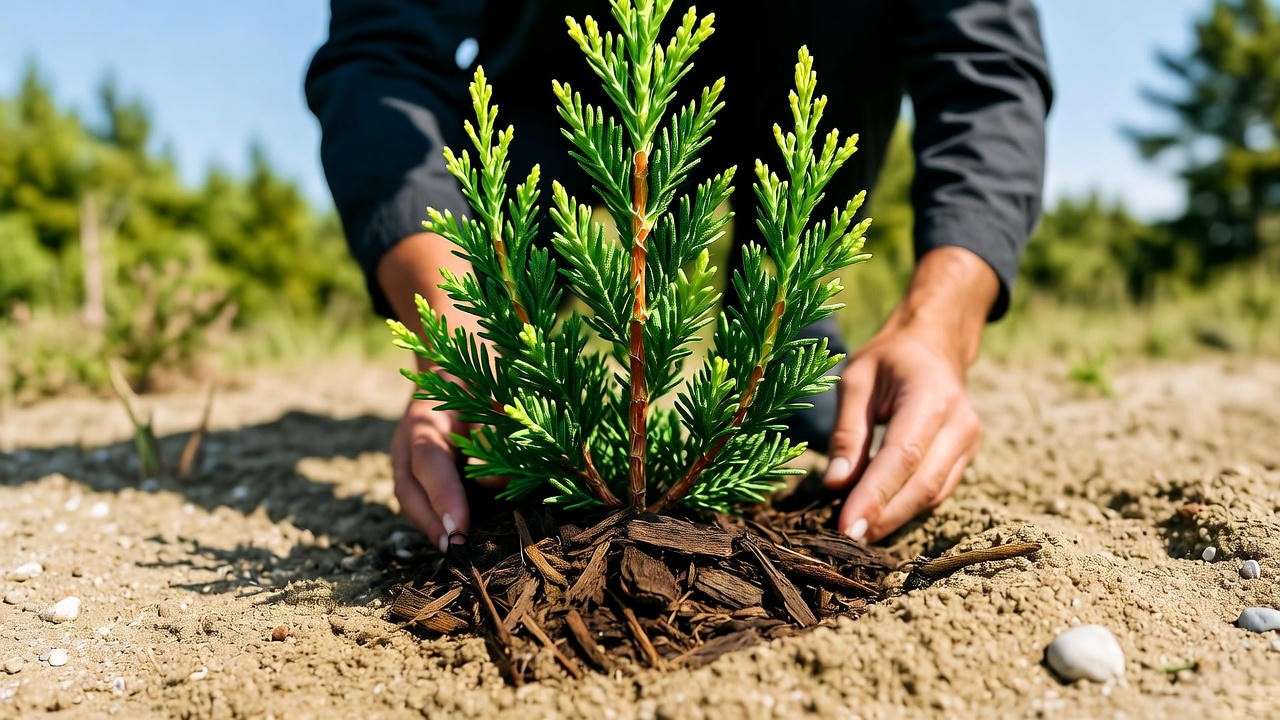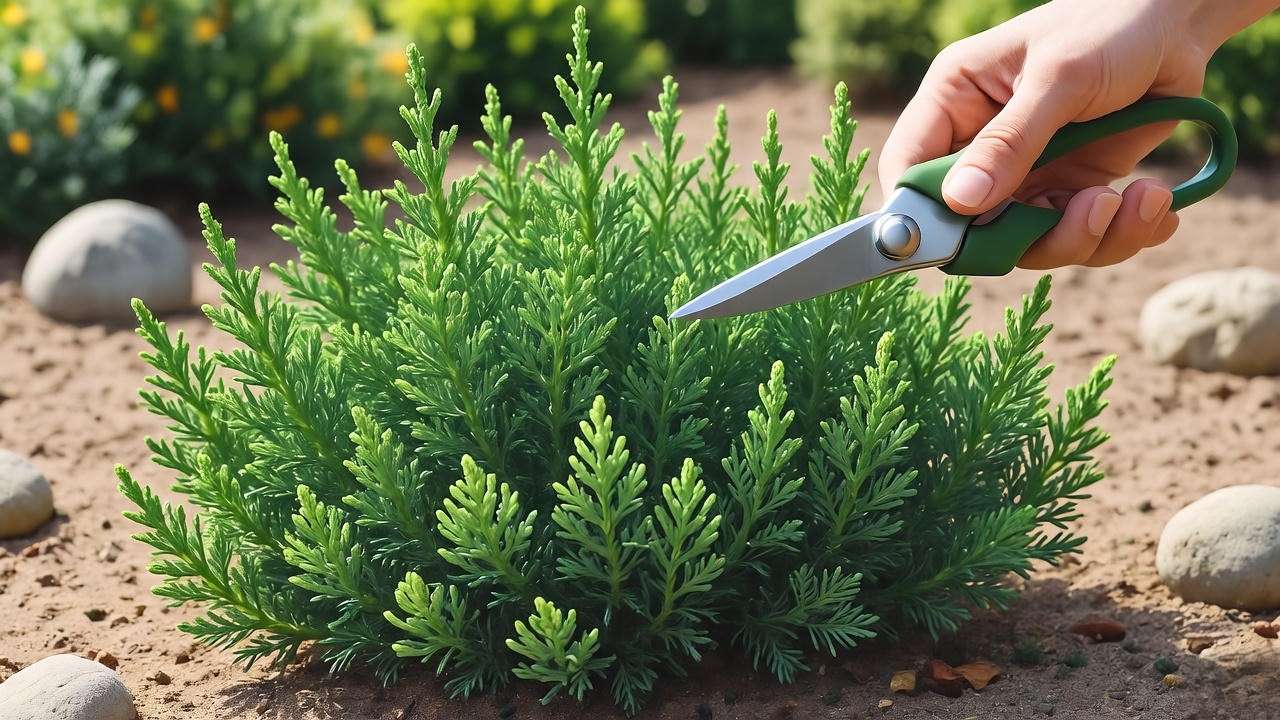Picture this: a windswept coastal garden, where vibrant green foliage hugs the ground, thriving against salty breezes and sandy soils. Enter the shore juniper plant, a tough, low-growing evergreen that transforms challenging landscapes into stunning displays of resilience and beauty. Whether you’re a coastal gardener battling erosion or a plant enthusiast seeking a low-maintenance gem, this guide is your roadmap to success. With decades of horticultural expertise and insights from coastal plant specialists, we’ll share seven essential tips to ensure your shore juniper flourishes. Get ready to cultivate a thriving coastal beauty that elevates your garden! 🌞
What is a Shore Juniper Plant? 🌱
Overview of the Shore Juniper (Juniperus conferta)
The shore juniper (Juniperus conferta), often called the Japanese shore juniper, is a low-growing, spreading evergreen shrub renowned for its adaptability. Native to the coastal regions of Japan, this plant boasts soft, needle-like foliage in vibrant green or bluish hues, with a creeping growth habit that makes it a favorite for ground cover. Popular varieties like ‘Blue Pacific’ and ‘Emerald Sea’ add distinct textures and colors to gardens. Its ability to tolerate salt spray, poor soils, and drought makes it a standout for coastal landscapes and beyond.
Why Choose a Shore Juniper for Your Garden?
Why opt for a shore juniper? Its benefits are hard to beat:
- Erosion Control: Its dense root system stabilizes soil on slopes and dunes.
- Low Maintenance: Once established, it requires minimal care.
- Year-Round Beauty: Evergreen foliage ensures visual appeal in all seasons.
- Versatility: Perfect for rock gardens, borders, or as a lawn alternative.
Dr. Emily Carter, a horticulturist with 20 years of experience in coastal landscaping, notes, “Shore junipers are a cornerstone of sustainable gardening, offering unmatched resilience in harsh environments.” Whether you’re designing a seaside retreat or a drought-tolerant urban garden, this plant delivers. 🌴
Understanding the Needs of Your Shore Juniper Plant 🌞
Ideal Growing Conditions
To thrive, shore junipers need conditions that mimic their native coastal habitats:
- Light: Full sun (6+ hours daily) is essential for vibrant growth and dense foliage. Partial shade can work, but expect slower growth and less vigor.
- Soil: Well-draining, sandy, or rocky soils are ideal. Shore junipers tolerate poor, nutrient-deficient soils but struggle in heavy clay or waterlogged areas.
- Climate: Hardy in USDA zones 5-9, they excel in coastal climates where salt spray and wind are common.
Watering and Moisture Needs
Young shore junipers need regular watering to establish roots—about 1 inch per week for the first year. Once established, they’re drought-tolerant and require minimal watering, except during prolonged dry spells. Overwatering is a common pitfall, leading to root rot. Look for signs like yellowing needles or soggy soil to adjust your routine. A good rule of thumb: water deeply but infrequently, allowing the soil to dry out between sessions. 💧
7 Essential Tips for Shore Juniper Plant Care 🌼
Tip 1 – Planting Your Shore Juniper the Right Way
Proper planting sets the stage for a healthy shore juniper. Follow these steps:
- Choose the Right Location: Select a sunny spot with well-draining soil. Avoid low-lying areas prone to water pooling.
- Prepare the Soil: Loosen soil to a depth of 12 inches and mix in sand or gravel if drainage is poor.
- Planting: Dig a hole twice as wide as the root ball but no deeper. Place the plant so the top of the root ball is level with the ground.
- Spacing: Space plants 3-6 feet apart to allow for their spreading habit (up to 8 feet wide).
- Mulch: Add a 2-inch layer of organic mulch (like bark or gravel) to retain moisture and suppress weeds.
Pro Tip: Plant in spring or early fall for optimal root establishment. Avoid summer heat or winter freezes. 🌱

Tip 2 – Watering Wisely for Healthy Growth
Watering is critical, especially for young plants. For the first year, water weekly, ensuring the soil stays moist but not soggy. A sample schedule for coastal climates:
- Spring/Fall: Water every 7-10 days.
- Summer: Increase to every 5-7 days during heatwaves.
- Winter: Reduce to every 2-3 weeks, depending on rainfall.
For established plants, water only during extended droughts. Check for yellowing or drooping needles, which signal overwatering or underwatering. Use a soaker hose for even distribution and to avoid wetting the foliage, which can invite fungal issues. 💦

Tip 3 – Fertilizing for Vibrant Foliage
Shore junipers aren’t heavy feeders, but a light fertilizer boost can enhance growth. Apply a balanced, slow-release fertilizer (e.g., 10-10-10) in early spring. Avoid high-nitrogen formulas, which promote leggy growth over dense foliage. For eco-conscious gardeners, organic options like compost or seaweed-based fertilizers work wonders, especially in coastal soils. Apply sparingly—over-fertilizing can burn roots or disrupt the plant’s natural resilience. 🌿
Tip 4 – Pruning for Shape and Health
Pruning keeps shore junipers tidy and healthy. Focus on:
- Timing: Prune in late winter or early spring before new growth starts.
- Technique: Use clean, sharp shears to remove dead or damaged branches. Lightly trim tips to maintain shape, but avoid cutting into woody stems, as junipers rarely regrow from old wood.
- Goal: Encourage dense growth and prevent legginess.
Warning: Heavy pruning can stress the plant, so never remove more than 20% of the foliage at once. Regular light trims are better than infrequent heavy cuts. ✂️

Tip 5 – Protecting Against Pests and Diseases
Shore junipers are relatively pest-resistant, but vigilance is key. Common issues include:
- Spider Mites: Look for webbing or stippled leaves. Control with neem oil or insecticidal soap.
- Bagworms: Hand-remove cocoons or use organic pesticides like Bacillus thuringiensis (Bt).
- Juniper Blight: A fungal disease causing browning needles. Improve air circulation and apply a fungicide if needed.
A 2023 study from the University of California Extension recommends regular inspection and early intervention to prevent pest escalation. Keep plants stress-free with proper watering and pruning to boost natural defenses. 🐞
Tip 6 – Winter Care for Shore Junipers
In colder zones (5-6), protect shore junipers from harsh winters:
- Mulch: Add an extra layer of mulch to insulate roots.
- Wind Protection: Use burlap screens in exposed coastal areas to shield from salt spray and drying winds.
- Snow Management: Gently brush heavy snow off branches to prevent breakage.
In milder climates, minimal winter care is needed, but monitor for salt buildup in coastal soils and rinse with fresh water if necessary. ❄️
Tip 7 – Using Shore Junipers in Landscape Design
Shore junipers shine in creative landscaping:
- Ground Cover: Plant en masse for a lush, low-maintenance carpet.
- Erosion Control: Use on slopes or dunes to stabilize soil.
- Rock Gardens: Pair with boulders and succulents for a rugged aesthetic.
Companion plants like lavender, ornamental grasses, or sea thrift enhance their beauty. Case Study: A 2024 coastal restoration project in Oregon used ‘Blue Pacific’ shore junipers to stabilize dunes, reducing erosion by 40% within two years. 🌸

Common Mistakes to Avoid When Growing Shore Juniper Plants 🚫
Growing shore junipers is straightforward, but avoid these pitfalls:
- Overwatering: Leads to root rot, especially in poorly draining soils. Always check soil moisture before watering.
- Planting in Shade: Insufficient sunlight causes sparse growth and weak plants.
- Improper Pruning: Cutting into old wood can stunt regrowth. Stick to light trims.
- Ignoring Pests: Early detection is crucial to prevent infestations from spreading.
Pro Tip: Download our “Shore Juniper Care Checklist” to troubleshoot issues and keep your plants thriving. 📋
Shore Juniper vs. Other Junipers: What Sets It Apart? 🌟
Unlike other junipers, the shore juniper is uniquely suited for tough conditions. Here’s how it compares:
| Feature | Shore Juniper | Creeping Juniper | Chinese Juniper |
|---|---|---|---|
| Height | 1-2 ft | 1-2 ft | 3-60 ft |
| Spread | 6-8 ft | 6-10 ft | 3-20 ft |
| Salt Tolerance | High | Moderate | Low |
| Uses | Ground cover, erosion | Ground cover | Ornamental, hedging |
Its superior salt tolerance and low growth make it ideal for coastal gardens. 🌊
Environmental Benefits of Growing Shore Juniper Plants 🌍
Beyond their beauty, shore junipers offer significant environmental advantages, making them a sustainable choice for eco-conscious gardeners:
- Erosion Control: Their dense, fibrous root systems anchor soil, preventing runoff on slopes, dunes, or coastal bluffs. This is critical in areas prone to wind or water erosion.
- Low Resource Needs: Requiring minimal water and fertilizer, shore junipers reduce the environmental footprint of gardening, aligning with water conservation efforts.
- Wildlife Support: Their low, spreading growth provides ground cover for small animals and nesting birds, enhancing local biodiversity.
A 2022 coastal restoration study by the University of Rhode Island highlighted shore junipers as a key species in stabilizing dunes, reducing erosion by up to 35% in test sites. By choosing shore junipers, you’re not just beautifying your garden—you’re contributing to a healthier planet. 🌎

FAQs About Shore Juniper Plant Care ❓
Q1: How fast does a shore juniper grow?
Shore junipers are moderate growers, spreading 6-12 inches per year under ideal conditions. Full coverage may take 2-3 years, depending on spacing and care.
Q2: Can shore junipers survive in pots?
Yes, but choose wide, shallow containers with excellent drainage. Use a sandy soil mix and ensure full sun. Potted junipers need more frequent watering than ground-planted ones.
Q3: Are shore junipers deer-resistant?
Generally, yes. Their tough, aromatic foliage deters deer, making them a great choice for gardens in deer-prone areas.
Q4: How do I revive a struggling shore juniper?
Check for overwatering, poor drainage, or pest issues. Adjust watering, improve soil drainage, and treat pests promptly. Prune dead branches to encourage new growth.
Q5: Can I grow shore junipers in non-coastal areas?
Absolutely! They thrive in any sunny, well-drained location, though they’re particularly suited to coastal climates due to their salt tolerance.
Conclusion: Grow a Thriving Shore Juniper with Confidence 🌴
With their rugged beauty and remarkable resilience, shore junipers are a gardener’s dream for creating low-maintenance, sustainable landscapes. By following these seven essential tips—proper planting, wise watering, light fertilizing, careful pruning, pest vigilance, winter protection, and creative design—you’ll ensure your shore juniper thrives for years to come. Whether you’re stabilizing a coastal dune or adding texture to a rock garden, this versatile evergreen delivers. Start your shore juniper journey today, and share your experiences or questions in the comments below—we’d love to hear from you! 🌟













